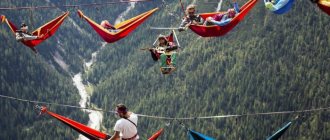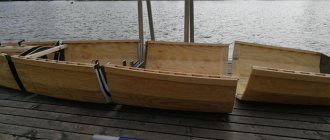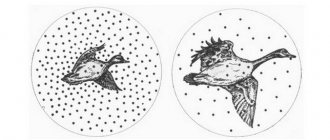Active recreation has always been popular. And now, when for a huge number of people work does not involve significant physical activity, it is especially important to keep yourself in good shape. That’s why jogging, visiting swimming pools and fitness centers are so popular. However, by taking measures to preserve and extend the full working state of the body to the maximum possible extent, we still, willy-nilly, turn this process into almost the same routine as work. And I really want to give my body a good shake-up at least for a couple of weeks a year, to prove to myself and those around me that I have both strength and dexterity. And I just want a change of scenery. It is for these reasons that many people choose water tourism. More precisely, any of its varieties. And there are several of them, and each has its own characteristics that must be known and taken into account.
What are the benefits of water tourism?
This type of outdoor activity has many advantages. For people who are not indifferent to the state of the environment, such a vacation is valuable primarily for its almost zero traumatic impact on nature. Traveling through water bodies, provided that minimum environmental requirements are met, does not cause any damage to the environment.
Also, this type of travel combines active recreation as such, and acquaintance with the beauties of nature, other attractions, the opportunity to express yourself, feel the effect of regular visits to the gym or swimming pool, learn new skills, and increase self-esteem.
Types of water tourism
By and large, this type of outdoor activity is divided into two large segments, which include several subspecies. These are: rafting water tourism and yachting (sailing water tourism).
As for the general points, each of these varieties is not for everyone. Rafting tourism will appeal to strong and risk-taking people who love to experience bravery (or prove that the number of years lived is not a reason to be written off as scrap) and to really tickle their nerves. Yachting requires significantly less effort and dexterity, but it also cannot be called an activity for the lazy, since this type of travel across bodies of water requires both certain skills and serious preparation.
By the way, it is the urgent need to seriously prepare that unites both types of water tourism. As well as the need not to forget for a second that water does not forgive frivolity and completely does not accept the hope of “maybe”.
Rafting tourism includes rafting and kayaking, canoeing, kayaking and catamarans. Rafting is rafting along turbulent bodies of water (usually mountain rivers) on special inflatable boats - rafts. Depending on the type of raft, it requires from two to six people to operate it. Therefore, this type of water tourism is exclusively collective. As well as sleeping on catamarans - double-hulled ships, which are operated by a crew consisting of a minimum of two people, a maximum (on the most common models) of eight.
Kayaks, canoes and kayaks come in single and double sizes. These rafting vessels are more maneuverable. However, it cannot be said that they are more difficult to manage than rafts or catamarans. Operating rafting craft of all types requires appropriate physical training, strong nerves, and certain skills.
Yachting is a calmer type of water tourism, but at the same time more expensive and more troublesome. The range of rafting craft varies from budget to luxury and branded. Moreover, with a very significant difference in prices, which allows even with low incomes to save money for an inexpensive but decent raft or a good kayak. But yachting, even in its most inexpensive varieties, will most likely exceed in costs or, at best, be comparable in this parameter to elite-level rafting tourism.
Yachting also includes expenses for the purchase or construction of a custom-made vessel, expenses for a berth for it, for storage space in the off-season, for payment of a fee associated with obtaining a yachting license, as well as for a number of other fees, individual for a particular vessel. other area. In addition, the costs of repairing any yacht significantly exceed the costs of repairing a rafting vessel of comparable complexity.
Therefore, those who want to take up yachting must first of all answer the question of whether they can afford such a hobby financially, and if the answer is affirmative, choose the type of vessel, obtain the necessary package of documents and learn the internal and international rules governing movement on water bodies on yachts Yes, having rules that you need to know is one of the features of yachting.
The key to a successful and enjoyable trip on a yacht is a person’s ability to handle the sail. Therefore, you also need to be prepared for the fact that you will have to spend some time and a certain amount of money on classes with an instructor.
Water tours
North-West (Leningrad region and Karelia) 2 days
Rafting on the Oredezh River on packrafts
Our water trip in the Leningrad region along the Oredezh River, whose total length is 206 km, will pass through one of its most beautiful and interesting sections between the villages of Siversky and Vyritsa. The river is not difficult, and in places very picturesque. Coastal zones - meadows, coniferous and mixed forests. The channel is moderately winding, the bottom is sandy, with single boulders. Along the way there are small rapids and rifts, springs, waterfalls, and spectacular red cliffs. In places where the river is overgrown with grass, rafting resembles sliding on a carpet. The hike is technically simple, but good physical shape will not hurt. We will carry out rafting on the Oredezh River on packrafts - compact inflatable boats weighing up to 4.5 kg, which are easy to carry or transport on bicycles. When inflated, the length of such a boat is 2-2.5 m. Light weight combined with good strength and stability on the water is achieved thanks to the use of high-strength nylon in the manufacture. Another advantage of packraft is fast inflation using special pumps that come with the products. Rafting along Oredezh begins in the village of Siversky. The main attraction of these places is the high banks of red sandstone. Before the dam, the current practically stops, so you will have to work with the oars. We will go around the dam itself along the right bank, which is not difficult, thanks to the small mass of the packraft. After the dam to the road bridge there is a rather difficult section with fast currents and fallen trees. After leaving Siverskoye, picturesque shores with dense forests and a giant stone await us, which, according to popular beliefs, gives strength to travelers and attracts good luck and money to them. From the mouth of the Orlinka River, which flows into Oredezh, rifts begin, which end at the mouth of another tributary - the Onza River. This beautiful area with waves boiling on the rifts is surrounded by high banks. After the mouth of the Onza, the village of Vyritsa is located, stretching along the right bank for more than 12 km. It is attractive to tourists mainly due to its wooden architecture and marble palace, built in 2005-2006. To finish the latter, only natural materials and ancient technologies were used. The palace complex includes a chapel. Near the dam, a simple drift awaits us, and then a rather complex rapid under the railway bridge. This is where our exciting water trip around Oredezh ends.
- Complexity:
- Deadlines: and 4 more deadlines
- Seats:4 seats left no space available available space available
- Cost: from
4,050 ₽Price:
from
4,050 ₽Price:
from
4,050 ₽Price:
from
4,050 ₽Price:
from
4,050 ₽
I want to go on a trip
Where to begin
Under no circumstances should you start by purchasing a watercraft. If you have already decided to take up water tourism, the first step is to travel on a rented boat with a highly qualified and experienced instructor. This type of tour is offered by many travel service market operators, and finding the right one is not a problem. This makes it possible, without large financial expenses, to “taste” something that can become a hobby for years and even decades, or something that, as it becomes clear after the first experience, may be clearly not suitable, and you need to look for some other form of pastime . At the same time, the instructor can give a lot of valuable advice for the future.
Those who have made a clear decision to choose water tourism as a hobby need to decide on the details. Namely, choose a watercraft depending on your capabilities and desires. If this is rafting water tourism, then you can purchase inflatable or collapsible vessels, which can be transported to your destination without any problems. Yachting has its own specifics, which were discussed above.
Unusual water transport: from an international raft to a hovercraft
10/09/2020 Author: Dmitry Denisenko
4811
Photo: Hovertravel Ltd | Facebook
Nowadays water transport is the most exotic, although a hundred years ago it was the only way to get to any island or other continent, but what is there - many trips within continents in the absence of any roads were carried out only along rivers and lakes using the power of the wind , pair or strong hands of rowers.
With the development of roads and railways, and later aviation, passenger water transport lost ground significantly. Now the proportion of passengers who use this type of transport for non-recreational purposes is negligible due to its low speeds. People most often go to sea to relax on a huge cruise ship or rented yacht and at the same time visit several port cities in different countries.
Nowadays the most important role of water transport is the transportation of goods. And here it is beyond competition: despite its low speed, the ships are capable of transporting huge volumes of a wide variety of cargo, from liquefied gas to containers with consumer goods, at an extremely low cost. However, passenger transportation by water has survived and plays a significant role in some regions of the planet.
Regular passenger service by water, as well as regular transport in general, is a relatively new phenomenon and appeared in the 19th century. Now long-distance passenger transport, for example, transatlantic routes, which were so popular in the first half of the 20th century both among the rich and among ordinary migrants, occupy a negligible share of the transcontinental transport market. The most popular watercraft turned out to be ferries designed to transport people over relatively short distances between the banks of rivers, bays and straits. Moreover, there are a great many types of ferries - from the most primitive raft of logs or barrels to ultra-modern high-speed ships. The most unusual of them will be discussed in this material.
Photo: ferryscan.com
Baltic Sea Ferries
One of the few places in the world where travel by water plays a truly significant role is the Baltic Sea, and the countries of the former USSR are quite active participants in this market. Residents of post-Soviet countries discovered vacations on cruise ships in the Mediterranean and the Caribbean relatively recently, and such vacations are still not very popular due to distances and high costs. The Baltic Sea is internal and for boat trips along it you do not need to fly to another continent.
The cruises themselves are very different from cruises on other seas. Firstly, the ferries here are multifunctional: they serve both as a means of transport for people and their cars, and as entertainment and shopping centers. This largely determines the second feature of Baltic ferries: round-trip routes to any one foreign port, for example, Helsinki-Tallinn-Helsinki, are more popular here, rather than cruises with many stops in different countries, typical of the Mediterranean Sea.
Finally, the cost of cruises is relatively low. Often, cabins on loop cruises like Stockholm-Helsinki-Stockholm are cheaper than a one-way ferry ticket. Many people take advantage of this by simply leaving the ferry at the desired port. But in general, passengers are more attracted not by the transport component of such cruises, but by the opportunity to purchase alcohol at cheap prices for Scandinavia (ferries are Duty Free zones), and often consume this alcohol in fair quantities.
Travel to Stockholm by ferry
Photo: vinnytsianews.com
International raft Cosauti – Yampol
There are quite a few interesting border points between Moldova and Ukraine, related to the peculiarities of their common border and the presence of the unrecognized Transnistria, but one of them is truly unusual, because it is proposed to cross the border on an ordinary raft across the Dniester. Officially, this vehicle is called a ferry, and it looks like a medium-sized raft consisting of several pontoons connected to each other. It can accommodate several cars and two to three dozen people. The ferry with two national flags - Ukraine and Moldova - regularly carried both residents of the Ukrainian Yampol and Moldavian Soroki, as well as travelers - the checkpoint here is international. This year, he accidentally ran into a smugglers' boat and ran aground. Let's hope it's not forever.
Photo: frs.es
Intercontinental ferries between Africa and Europe
There are quite a few regular sea connections between continents in the world, and the fastest way to get from one part of the world to another is to buy a ticket from Africa to Europe or vice versa. Departure ports can be different - in Africa this is the Moroccan port of Tangier with an interesting multi-layered history, the tiny Spanish enclaves of Ceuta and Melilla, or the less popular (due to visa difficulties) ports of Algeria. In Europe, there are fewer options - these are either the Spanish ports of Tarifa (where the southernmost point of Europe is located) and Algeciras, or the British port of Gibraltar (ferries here will cost more). If you buy a ticket in advance, you can cross the strait by paying about € 30-40. Border formalities are quite easy (although encounters with all sorts of crooks are possible), and the journey to another continent itself will only take about an hour.
Travel to Gibraltar
Photo:
Ferry Hong Kong - Macau
Sea communications between the two former colonies, now special regions of China, were established back in the 19th century. In the mid-20th century, when direct land travel across the Chinese mainland became difficult following the communist takeover there, ferries became the only available means of communication between the colonies. Until the end of the century, British Hong Kong and Portuguese Macau were virtually independent states, on the internal politics of which their metropolises did not have undue influence, and trade between them was very brisk.
Even though both Hong Kong and Macau are now part of China, they are still very distinct parts of it. Hong Kong plays the role of one of the most powerful business centers in the world, and Macau relatively recently took the title of the world gambling capital from Las Vegas. Naturally, all types of transport travel between cities, but even with the construction of a state-of-the-art bridge in 2021, ferries remain the most popular passenger transport. Their advantage is speed (they only go for about an hour) and the presence of terminals in the centers of both megacities.
Photo: insideevs.com
The fastest ferries in the world
The fastest watercraft in the world operating regular flights is the gas turbine catamaran “Pope Francis” (Francisco Papa), named after the Argentine Pope. A huge ferry, accommodating 1,000 passengers and 150 cars, sails across the wide mouth of the South American La Plata River from the capital of Uruguay, Montevideo, to the capital of Argentina, Buenos Aires. The maximum speed that the catamaran, built in 2012, develops is an incredible 107.6 km/h for a ship, and in general it covers a distance of 200 km in just 2 hours 12 minutes.
The Norwegian ferry Rygerelektra has a more modest speed of 42.6 km/h, but it is even more environmentally friendly than the liquefied gas-powered Papa. This rather large ferry (accommodates 297 people) runs exclusively on electric batteries, so it is not surprising that it appeared in Norway, a leading country in the field of electric transport.
Photo: Niklas Herrmann on Unsplash
Manhattan - Staten Island Ferry
Perhaps the most Instagrammable watercraft in the world is the New York ferry from Manhattan to the most remote borough of New York on Staten Island. This ferry has been operating for more than 200 years - since 1817, being the only direct public transport between the two islands of New York. It runs all year round, 7 days a week and 24 hours a day, every 15-30 minutes, and since 1997 it has been free for absolutely everyone. That is why the ferry has become the most popular place from which tourists can admire the skyline of downtown Manhattan and the Statue of Liberty - after all, the ferry passes a couple of hundred meters from one of the most famous sculptures in the world. Tours to Liberty Island itself, on which the statue stands, cost a lot of money, and the ferry allows you to do this at any hour of the day or night without prior reservation and completely free of charge.
Photo: phhere.com
Traghetto in Venice
In Venice, until 1854, there was only one bridge over the Grand Canal - the famous Rialto. And, naturally, numerous residents of the city did not want to walk extra meters and kilometers to the only bridge every time they needed to get to the other side. If there is demand, there will be supply. Ferry stations were formed on different banks of the main canal of Venice (ferry translated into Italian as traghetto), where gondoliers transported those wishing to cross the canal for a reasonable fee. Traghetto are the same gondolas, only for an individual ride on a gondola they will charge you more than a hundred euros, but traghetto is public transport. For a fee of just € 2 (locals generally 70 cents) you will be taken to the opposite bank of the Grand Canal in a couple of minutes, the main thing is to have time to enjoy the feeling of riding on a real gondola. Moreover, the locals do this mostly standing, calmly enduring the pitching.
Photo: Hovertravel Ltd | Facebook
Hovercraft ferry to Isle of Wight
Off the southern coast of Britain there is the small Isle of Wight, which was a favorite holiday destination for the British aristocracy. Aristocrats had to be transported to the island somehow, and since the 19th century there have been various ferry crossings, including for trains. But the most unusual ferry here is the high-speed hovercraft company Hovertravel.
Hovertravel claims on its website that it is the only company in the world that provides regular commercial passenger transportation on hovercraft (also called hovercraft). This seems to be true, because the golden age of these cars is long behind us. In the second half of the last century, hovercrafts were one of the most popular and fastest ways to cross the English Channel - on average, the journey took 35 minutes, but the record was 22 minutes. But the opening of the Eurotunnel under the strait in 1994 gradually made hovercraft transportation unprofitable. The last flight across the English Channel was made in 2000 and since then regular flights have been maintained only on the crossing to the Isle of Wight.
Of course, it is impossible to describe all the interesting ways to travel by water - despite the relatively low popularity of this type of travel, there are a lot of unique types of water transport on Earth. Here you can find the most popular and busiest ferry line in the world from France to England across the English Channel, and remote rental of electric boats in Amsterdam, as well as the longest river routes along the Amazon, where passengers while away the stuffy tropical nights in hammocks, and along the rivers of Russia, where especially The Omsk-Salekhard river line stands out. One can only hope that, despite the unprofitability and unpopularity, the diversity of water transport will remain.
4811
Equipment is the key to success
Even the best boat does not guarantee that the trip will be without problems and the memories of it will be only pleasant if you do not take care of the equipment. A life jacket is required for everyone without exception. Even for world champion swimmers. Any unpleasant surprise can happen at any moment, and swimming skills may not save a person. Let's say, in case of injury. Therefore, the number of vests equal to the number of travel participants is yours. For rafting water tourism, the presence of protective helmets is also required.
Also, before traveling, get a wetsuit, light closed shoes, a waterproof backpack, gloves, special bags for secure storage of especially valuable things (phone, power bank, documents, money, flashlight, repellent, medicines, dry underwear). Even if the trip is planned for the summer, you definitely need to take a sweater and warm socks, especially if you plan to spend the night on the shore. After all, the water is always cooler, even in the hottest time. Therefore, it is highly advisable to protect yourself from colds. Of course, you shouldn’t forget about provisions and equipment for preparing it.











